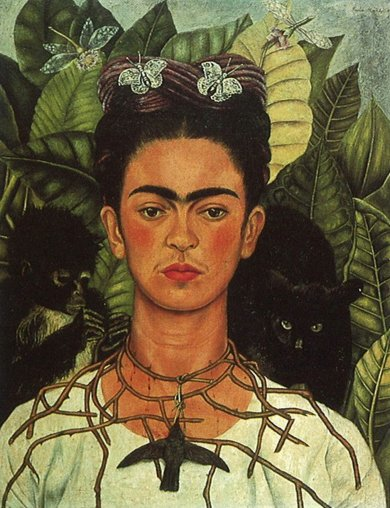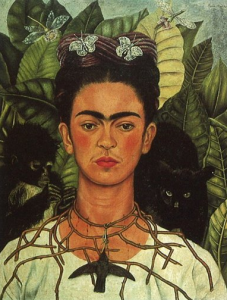“In Wonderland” Celebrates Latina Surrealist Painters

 Although collaboration between institutes can sometimes prove a treacherous affair, the current collaboration between Los Angeles County Museum of Art and Museo de Arte Moderno in Mexico City only proves the converse. Namely, that collaboration presents curators with the opportunity to pool resources, forge distinct dialects of taste, and get down.
Although collaboration between institutes can sometimes prove a treacherous affair, the current collaboration between Los Angeles County Museum of Art and Museo de Arte Moderno in Mexico City only proves the converse. Namely, that collaboration presents curators with the opportunity to pool resources, forge distinct dialects of taste, and get down.
A good team effort between curators at like-minded institutes can even rewrite the narratives of artistic movements, ensuring that rosters don’t get myopic, or biased toward a gender, ethnicity, or culture. As an institute, it is clear LACMA is reaping the benefits of collaboration as evidenced in “In Wonderland: The Surrealist Adventures of Women Artists in Mexico and the United States,” but also their “ASCO” exhibit, a collaboration with Williams College Museum of Art.
Meandering through the several salons it is plain to see that the curators, Ilene Susan Fort and Tere Arcq, had the type of fun typically reserved for kids in a candy shop — in many ways, the exhibition borders on the manic: 175 pieces of art spread out over 48 artists. And yet, I could have lost myself in parsing another 175 pieces of art with relative ease. The exhibit affects a re-writing of Western surrealist history by infusing herstories of North American surrealists from (roughly) the 30s to the 70s, it ensures that the role women played in the Surrealism movement doesn’t get vandalized by chauvinists, or downplayed and mingled with the feminine imperative of the muse.
In many ways this exhibit is a dare to scholars and critics that might choose to suppress the seminal influence painters like Dorothea Tanning and Remedios Varo had on the verve of the Surrealist movement in the Américas. The works by Frida Kahlo in the “In Wonderland” exhibit at LACMA are well worth the price of admission; they spangle the middle of the exhibit, like stuffed grizzlies. But, the competing compositions of other painters ensured I was actually able to see them with factory-eyes. To believe one exhibit can be represented by one painting or one painter is folly; the real gem of “In Wonderland” is the veritable feast of paintings by lesser-known (but not necessarily, minor) women in the Surrealist movement.
An exhibit like “In Wonderland” reprioritizes the largesse of peripheral artists like Remedios Varo. She was a Spanish Surrealist painter that exiled herself in Mexico at the height of her career; her paintings are brazen, figurative compositions of almost psychedelic, paranormal tableaus. In “Papilla Estelar,” a maiden churns stars into a pablum she feeds to an avian moon-man; in “Mimetismo,” a woman figure has been sitting for so long that she’s literally become a part of the chair which made me think of a short story of Cortazar’s “Continuidad de los parques” (“Continuity of Parks”).
An added benefit is that the curators transcend the limitations of genre, media, and artifact by including a bevy of titillating sculptures. There are two sculptures (imperceptibly placed) by Louis Bourgeois that completely obliterated my synapses. “Portrait of C.Y.” (1947) is a slender totem, painted white, with roughly thirty nails hammered in on top of each other to resemble a mouth. And, “Persistent Antagonism” (1947) is a sleek, two-toned, spear-shaped sculpture that stands miraculously on its handle. The pieces stand on their own, but surrounded by the other treasures in their immediate air space, they took on an almost primal backglow.
[Courtesy Photo]
